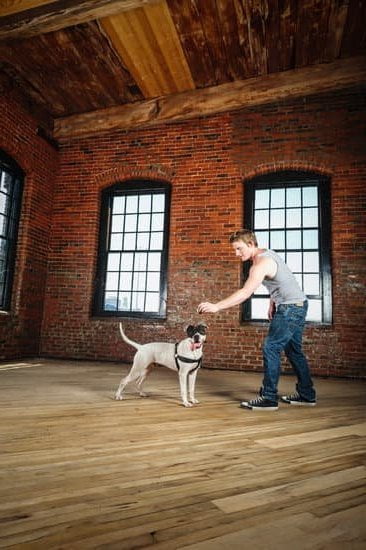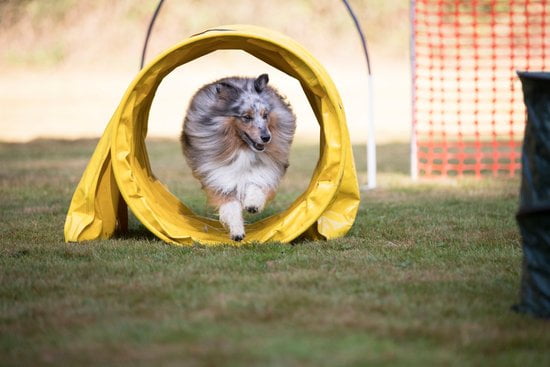Training a dog is an essential part of ensuring their happiness and well-being. A well-trained dog not only brings joy to their owner but also creates a harmonious living environment for both the pet and the family. With various training methods available, it’s important to explore the most effective approaches that can achieve desired results. This article focuses on one such method: using a prong collar for dog training.
Properly training your furry companion is crucial for establishing good behavior and preventing behavioral issues. Dogs are social animals that thrive in structured environments, and through training, they learn how to coexist in our human world. It’s not just about teaching them commands; it’s about instilling discipline, positive habits, and building trust between you and your pet.
While there are several training techniques to choose from, using a prong collar has gained popularity due to its effectiveness in correcting behavior. In this article, we will delve into the use of prong collars as a tool for dog training, examining their purpose and addressing common misconceptions surrounding them.
We will also explore the importance of gathering the necessary tools and equipment, guide you through introducing your dog to the prong collar, and discuss basic obedience training as well as addressing behavioral issues.
By understanding these various aspects of prong collar training, you will be equipped with valuable knowledge to train your beloved canine companion effectively. It’s time to embark on a journey towards creating a bond built on trust and respect – all through the power of proper dog training with a prong collar.
Understanding Prong Collars
Prong collars, also known as pinch collars, are a type of training collar that is commonly used to control and train dogs. These collars consist of metal links with blunted prongs that apply pressure to the dog’s neck when tension is applied to the leash. It’s important to note that prong collars should only be used under the guidance of a professional dog trainer or with proper knowledge on how to use them correctly.
One common misconception about prong collars is that they are cruel or harmful to dogs. However, when used properly, prong collars can be an effective tool for training and managing certain dogs with behavioral issues. The pressure from the prongs mimics how a mother dog would correct her puppies’ behavior, making it a natural method of communication for dogs.
Safety features are an important aspect to consider when using a prong collar. Many modern designs come equipped with quick-release mechanisms or additional safety clasps to ensure that the collar can be easily removed in case of emergencies or accidental snagging.
Additionally, it’s crucial to choose the appropriate size and fit for your dog to prevent any discomfort or injury. Prong collars should be fitted high on the dog’s neck, just below the jawline, without causing any pain or choking.
It’s important for dog owners considering using a prong collar to educate themselves thoroughly on its proper use and potential risks. Seeking guidance from professional trainers and gradually introducing your dog to the collar will help ensure safe and effective training sessions.
Preparing for Training
Before beginning any dog training, it is important to gather the necessary tools and equipment to ensure a successful training session. When using a prong collar as a training tool, there are several items that should be gathered to ensure the process goes smoothly.
Firstly, it is important to have the correct size and material of prong collar for your dog. Prong collars come in various sizes, so it is crucial to measure your dog’s neck accurately before purchasing one. A properly fitted prong collar should sit high on the dog’s neck and fit snugly without causing discomfort or injury. Choosing the appropriate material is also essential, with stainless steel being a popular and durable option.
In addition to the prong collar, other tools can aid in training effectiveness. Treats are an excellent positive reinforcement tool during training sessions, as dogs respond well to rewards for desired behavior. Clickers can also be used as an additional way of marking desired behaviors and reinforcing positive associations.
| Tools and Equipment |
|---|
| Prong collar (proper size and material) |
| Treats |
| Clicker (optional) |
By gathering these tools and equipment before beginning prong collar training, you will be equipped with everything needed to train your dog effectively. Ensuring that you have the correct size of prong collar, along with treats or clickers for positive reinforcement, will set you up for success in establishing good behavior through training sessions.
Step-by-Step Guide
Properly Fitting the Collar
Introducing your dog to a prong collar starts with ensuring it is properly fitted. This is crucial for both the effectiveness of the training and your dog’s comfort. To determine the right size of prong collar, measure your dog’s neck using a soft measuring tape. Add a few inches to allow for adjustment and select a collar that falls within that range.
When fitting the prong collar, place it high on your dog’s neck, just behind the ears. The prongs should be positioned inwards against your dog’s skin and evenly distributed around their neck. It is essential to avoid any loose or tight spots as this can cause discomfort or injury during training.
Acclimating Your Dog to Wearing the Collar
Once you have properly fitted the prong collar, it’s time to introduce it to your furry friend. Start by allowing them to sniff and inspect the collar before gently placing it around their neck. Avoid any sudden movements or fastening it too tightly initially as this can create negative associations.
At first, let your dog wear the prong collar for short intervals while supervised. Gradually increase the duration they wear it over several days until they become comfortable with having it on throughout their training sessions.
Creating Positive Associations
To ensure a positive training experience, it is important to associate wearing the prong collar with positive reinforcement techniques. Use treats, praise, and rewards when introducing and fitting the collar for your dog. This will help them associate wearing the collar with positive experiences and make them more receptive during training sessions.
As you progress with training, continue offering positive reinforcement whenever your dog exhibits desired behavior while wearing the prong collar. This will reinforce their understanding that wearing the collar leads to positive outcomes, further motivating them to perform well during obedience exercises.
By following these steps, you can introduce your dog to the prong collar in a safe and positive manner. Remember to always prioritize their comfort and well-being throughout the process.
Basic Obedience Training with a Prong Collar
Teaching Fundamental Commands
Using a prong collar for basic obedience training can be an effective way to teach your dog fundamental commands such as sit, stay, and heel. The prong collar provides clear communication between you and your dog, allowing for more precise and timely corrections when needed.
When teaching these commands, it’s important to start in a low-distraction environment, such as your home or backyard. Begin by fitting the prong collar correctly on your dog, making sure it sits high on the neck behind the ears and snug enough so that it doesn’t slide down. This will ensure that the corrections are effective without causing any discomfort or harm.
To teach the “sit” command, gently apply pressure on the leash attached to the prong collar while giving a verbal cue like “sit.” If your dog resists or doesn’t understand, continue applying gentle pressure until they comply with the command. As soon as they sit, release the pressure and reward them with verbal praise or a treat.
Proper Correction Techniques
When using a prong collar for obedience training, it’s essential to understand how to apply corrections properly. Corrections should be quick and firm but not harsh or excessive. A slight tug on the leash is usually sufficient to get your dog’s attention and prompt them to correct their behavior.
For example, if your dog starts pulling on the leash during a walk instead of staying by your side (heeling), give a quick correction by jerking back on the leash. At the same time, firmly say “heel.” Release the pressure once your dog adjusts their position accordingly. Consistency is key in reinforcing proper behavior using this method.
It’s crucial to remember that corrections should only be used as a means of redirecting undesirable behavior towards more desirable alternatives. It’s recommended to combine this method with positive reinforcement techniques such as praise, treats, or clicker training to reinforce the desired behavior and create a positive training experience for your dog.
Consistency and Patience
During obedience training with a prong collar, consistency and patience are vital. Dogs thrive on repetition and routine, so it’s important to practice commands regularly in various settings and gradually increase distractions as your dog progresses.
Consistency also includes using the prong collar correctly for each command. Make sure you apply consistent corrections and rewards for desired behaviors, ensuring that your dog understands what is expected of them. This will help establish clear communication and maintain consistency throughout their training journey.
Patience is equally crucial when using a prong collar for obedience training. Each dog learns at their own pace, so it’s essential to be patient and understanding throughout the process. Celebrate even small victories, as they signify progress towards achieving the desired results. Remember to always provide encouragement and reassurance to build trust between you and your furry companion.
By utilizing the basic obedience training techniques with a prong collar outlined above, you can effectively teach your dog necessary commands while reinforcing positive behavior. Stay committed, be consistent, and remember that patience is key in developing a well-trained pet.
Addressing Behavioral Issues
One of the main advantages of using a prong collar for dog training is its effectiveness in correcting behavioral issues. Many common behavioral problems, such as jumping or pulling on the leash, can be effectively addressed with the proper use of a prong collar. In this section, we will explore techniques for correcting problematic behaviors and how the prong collar can be used as a tool in this process.
When it comes to correcting behavioral issues, consistency is key. It is important to provide clear and timely corrections to your dog’s unwanted behaviors. With the prong collar, you can provide quick and gentle corrections that will make your dog understand what behavior you want them to stop.
For example, if your dog tends to jump on people when they enter the house, you can use the prong collar to give a quick correction when they start jumping. This helps them associate jumping with an unpleasant sensation and encourages them to stop the behavior.
It is crucial to use the prong collar as a tool for redirection rather than punishment. The goal is not to cause pain or discomfort but to communicate with your dog in a way they understand. Using consistent cues and timing, you can guide your dog towards more desirable behaviors.
Additionally, it is important to pair the correction with positive reinforcement when your dog exhibits the desired behavior. This combination of clear communication and positive reinforcement strengthens their understanding of what is expected from them.
While using a prong collar can be effective in correcting behavioral issues, it’s important to note that every dog is unique and may respond differently to training methods. Some dogs may require alternative approaches or additional training tools to address specific challenges. It’s advisable to consult with a professional dog trainer who has experience in using prong collars or other training methods tailored specifically for your dog’s needs.
By addressing problematic behaviors through consistent training techniques supported by an understanding of canine psychology, you can create a harmonious living environment for both you and your dog. Remember, using a prong collar as part of your training strategy is just one tool among many, and it should always be used responsibly and with the best interest of your pet in mind.
Advanced Training
Once your dog has mastered basic obedience commands using a prong collar, it’s time to take their training to the next level. Advanced training allows you to enhance your dog’s skills and teach them more specialized commands and tricks. This section will guide you through the process of advancing your dog’s training repertoire with the help of a prong collar.
To begin advanced training with a prong collar, it is important to first ensure that your dog has a solid foundation in basic obedience commands. This includes commands such as sit, stay, come, heel, and down. Once your dog has mastered these fundamental commands, you can start introducing more advanced commands and tricks.
Some examples of advanced commands include:
- Off-Leash Recall: Teaching your dog to come when called even in off-leash situations.
- Agility Training: Introducing your dog to agility obstacles like tunnels, jumps, and weave poles.
- Tricks: Teaching fun tricks such as roll over, play dead, or give paw.
When training advanced commands with a prong collar, it is crucial to maintain consistency and patience. Reinforce desired behavior with proper correction techniques while avoiding harsh corrections that may overwhelm or confuse your dog. Remember to always reward your dog for successfully completing the command or trick.
Consistency is key in advanced training as well. Practice regularly with short but focused sessions to reinforce learned behaviors and continue challenging your dog. Gradually increase the difficulty of the commands or tricks as your dog becomes more proficient.
As with any training method, it’s important to keep in mind that not all dogs may respond well to advanced training techniques using a prong collar. Some dogs may require alternative methods based on their individual needs or temperaments. It is advisable to consult with a professional trainer or behaviorist experienced in positive reinforcement techniques if you encounter difficulties during advanced training.
| Advanced Commands | Description |
|---|---|
| Off-Leash Recall | Teaching your dog to come when called even in off-leash situations. |
| Agility Training | Introducing your dog to agility obstacles like tunnels, jumps, and weave poles. |
| Tricks | Teaching fun tricks such as roll over, play dead, or give paw. |
Safety Tips and Final Thoughts on Prong Collar Training
When using a prong collar for training your dog, it is important to prioritize safety to ensure the well-being of your pet. Here are some essential safety tips to keep in mind:
- Fit the collar properly: It is crucial to fit the prong collar correctly to avoid causing any discomfort or harm to your furry friend. The collar should sit high on the dog’s neck, just behind their ears. It should be snug, but not too tight, allowing for easy movement and breathing.
- Gradual introduction: Before starting any training with the prong collar, take some time to familiarize your dog with it. Let them sniff and examine the collar before putting it on them. Once they are comfortable with its presence, start by having them wear it for short periods around the house before moving onto training sessions.
- Use appropriate corrections: When using a prong collar for correction during training, it is important to apply gentle and controlled pressure instead of yanking or jerking abruptly. Corrections should be timed appropriately and released immediately when your dog responds positively to reinforce desired behaviors.
- Consistency and positive reinforcement: While the prong collar can be an effective tool in training, it is essential to combine it with positive reinforcement techniques such as treats or praises. Reward your dog whenever they display the desired behavior you are trying to teach them using the collar.
- Regular breaks: During training sessions using a prong collar, make sure to give your pet regular breaks for rest and water. Keeping training sessions short yet frequent will help maintain your dog’s focus and prevent overexertion or frustration.
Conclusion
In conclusion, the use of a prong collar can be an effective and empowering training method for dog owners. Throughout this article, we have explored the importance of proper dog training and different training methods available.
While there may be misconceptions about prong collars, it is essential to understand their purpose and correct usage. By following a step-by-step guide and focusing on basic obedience training, dog owners can use the prong collar as a tool to reinforce desired behaviors.
Using a prong collar also addresses problematic behaviors in dogs. Techniques such as correcting jumping or pulling can be effectively managed with the help of a prong collar. However, it is crucial to remember that alternative training methods may be necessary for specific behavioral challenges.
Taking your dog’s skills to the next level requires advanced training techniques. The prong collar can aid in teaching specialized commands and tricks that enhance your dog’s repertoire. Consistency and patience are key throughout all stages of training, ensuring that learned behaviors are reinforced consistently.
Ultimately, using a prong collar empowers dog owners by providing an effective tool for training their pets. It is important to approach training with responsibility and ongoing education on proper techniques. By utilizing a combination of appropriate tools and positive reinforcement methods, dog owners can build confidence in their ability to train their pets effectively and create a happy and well-behaved companion.
Frequently Asked Questions
How do you train a dog with a prong collar?
Training a dog with a prong collar requires careful and responsible handling. It is important to first learn the correct way to use the collar by seeking guidance from a professional dog trainer or behaviorist. The correct fit of the collar is crucial; it should be snug but not too tight.
When training, gentle and consistent pressure should be applied through quick, firm tugs on the leash to attract the dog’s attention and redirect their behavior. It is essential to never jerk, yank, or pull excessively on the collar as this can cause harm and create negative associations for the dog. Reinforcing desired behaviors with positive rewards such as treats, praise, and affection is imperative for effective training with a prong collar.
Are prong collars good for training dogs?
Prong collars can be effective tools for training some dogs when used properly and under professional guidance. They are designed to mimic a mother dog’s corrective bite on her puppies’ necks, providing feedback without causing significant harm or pain to the dog. However, it is important to note that prong collars should not be indiscriminately used as a default training method for all dogs.
Each dog has unique needs and sensitivities, so other training methods might be more suitable in certain cases. Moreover, prong collars should always be used as part of a comprehensive training program that incorporates positive reinforcement techniques to encourage desired behaviors rather than solely relying on aversive methods.
How long should I train my dog with a prong collar?
The duration of training sessions with a prong collar will vary depending on several factors including your specific goals, your dog’s temperament and learning ability, and any underlying behavioral issues being addressed. Shorter sessions spread throughout multiple sessions per day tend to yield better results than long, intense sessions that may exhaust or overwhelm the dog mentally and physically. Generally speaking, starting with sessions lasting around 10-15 minutes is recommended before gradually increasing the duration over time as you observe progress in your dog’s response to commands and improved behavior.
It is crucial to maintain a balance between consistency in training and allowing adequate breaks to prevent mental fatigue and stress on your dog. Remember, quality training sessions with a prong collar involve positive reinforcement and building trust, rather than solely relying on the collar as a means of control.

Welcome to the blog! I am a professional dog trainer and have been working with dogs for many years. In this blog, I will be discussing various topics related to dog training, including tips, tricks, and advice. I hope you find this information helpful and informative. Thanks for reading!





